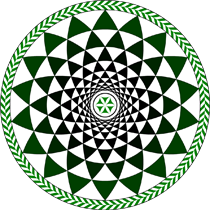Speaker
Prof.
Manuela Ramos Silva
(University of Coimbra)
Description
`Mononuclear lanthanide complexes, that behave as Single-Ion Magnets (SIMs) have only been studied in the last 15 years (the interest was triggered by the work of Ishikawa on terbium phtalocyaninate in 2003). In these complexes, in which the Ln(III) ion is surrounded by organic ligands in a low symmetry environment, the crystal-field splitting of the J ground state of the lanthanide ion gives several ground-multiplet sublevels where the lowest twofold degenerate sublevel may have a large $|J_z|$ value. If quantum tunnelling is inhibited, it is believed that the transition among the twofold degenerate crystal-field ground-states, $|J,J_z=\pm J\rangle$, corresponding to “spin up” and “spin down” can be made through the second-lowest sublevels, but because the energy gap is so large (up to several hundreds of reciprocal centimetres), the transition has to be very slow. Therefore, long magnetic relaxation times and magnetization hysteresis loops can be observed.
Also, these compounds are luminescent with characteristic narrow-line emissions, mostly in the visible and near infrared (NIR) range, when the excitation is mediated through the ligands using UV-to-visible light. Electro-luminescence can also be observed.
We herein report the results of the study of a large family of Ln(III) compounds, mainly with Er(III), using a variety of techniques like single crystal, powder X-ray diffraction, FTIR and NMR spectroscopy, DSC and thermomicroscopy. Results of the luminescent properties measurements, like absorption, emission, excitation and decay times, including confirmation of the ligand-to-lanthanide energy transfer will be presented. The temperature dependence of the magnetic susceptibility in the range 4-300K, confirming the single-lanthanide-ion behaviour, will be discussed.
Magnetisation curves measured with illumination will be presented and compared to those obtained in the dark.`
Author
Prof.
Manuela Ramos Silva
(University of Coimbra)
Co-authors
Ms
Anita Gardias
(University of Warsaw)
Prof.
Ermelinda Eusébio
(University of Coimbra)
Dr
Fernando Lahoz
(University of La Laguna)
Prof.
Jacek Szczytko
(University of Warsaw)
Mr
Jaroslaw Rybusinski
(University of Warsaw)
Prof.
Jesús Martín-Gil
(University of Valladolid)
Dr
Laura Pereira
(Instituto Superior Técnico)
Ms
Maria Susano
(Unversity of Coimbra)
Dr
Martin Inocencio
(University of La Laguna)
Prof.
Pablo Martín-Ramos
(University of Zaragoza)
Dr
Victor Lavín
(University of La Laguna)

